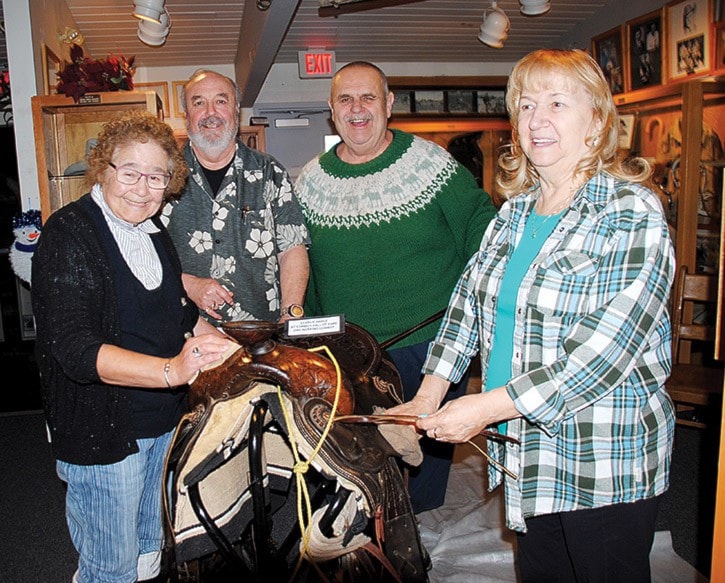The Museum of the Cariboo Chilcotin is home to what is quite possibly the largest and most diverse collection of saddles in Canada.
And they all need to be maintained.
New museum board member Wayne Lucier has enlisted the help of his family to oil the extensive collection, a job that must be done at least every two years to keep the saddles from drying out, becoming stiff, cracking and breaking.
Since Jan. 4 the small volunteer team had already spent about 34 hours (as of last week) and oiled 24 of the more than 50 saddles in the collection. The team has been working for a couple of hours together each morning while the museum is closed for maintenance and plans to carry on until they finish the job.
Mary Lucier, 87, is the oldest member of the team joining her sons Wayne and Arnold, son-in-law Robert Swears, and family friend Pam Titchener in the painstaking task.
“I rode horses growing up in Manitoba but we rode bareback,” Mary says.
Mary says she rode on her first saddle after moving Williams Lake in 1980 to be close to her sons after her husband died.
“Arnold took me out riding at Springhouse with all the kids and grandkids,” says Mary as she oils a collection from the Alkali Lake Ranch which includes a bridle and reins used by Mario von Riedemann along with a saddle, chaps and lariat rope used by his son Martin.
Wayne says they were given advice by an experienced horseman on how to care for the saddles.
They are not using saddle soap which would dry out some of the older saddles too much. Instead they are applying Pure Heatsfootoil to all of the parts of the saddles, bridals and chaps in the collection.
Some of the older saddles may have been sitting unattended in barns and shops for years before being donated to the museum and are in poor condition.
Others are in good condition and just need a good oiling.
Some of the older, very dry and rigid saddles have to be oiled several times.
Robert said he soaked a saddle from the Newton Ranch dated 1860 four times at 15 minute intervals and finally got some of the rigid parts to soften up a bit.
“There are three saddles we can’t touch because they are so old that they can’t be moved,” Arnold says. One of these old untouchable saddles dates back to 1872.
“A professional saddle shop would be able to do it but the cracks will get worse if we try to move them now.”
He says the museum is old and doesn’t have the proper humidity controls to keep the saddles in prime condition.
Wayne says he is having fun with his family taking care of the museum’s saddles.
“When we were young we would just jump on our horses bareback to go and get the cattle,” Wayne says. “My dad Frank was a cowboy. His horses were so well trained that he used to be able to hunt from them.”
Wayne says he and Arnold have been volunteering their musical talents for museum fundraisers for many years. He says this will be the first time in 35 years that he won’t be able to perform on the museum float or in front of the museum during the parade because he and his family are going back to Roblin, Manitoba to be with his wife Linda’s brother who is ill.
He says he and Arnold are also looking forward to performing in Roblin.
They already have a concert date set for their visit.
“It’s kind of cool because I’ve never played in my home town,” Wayne says.
The museum has been closed for maintenance and cleaning since Jan. 2 and will reopen on Tuesday, Jan. 17.
Winter hours are Tuesday to Saturday from 11 a.m. to 4 p.m.
